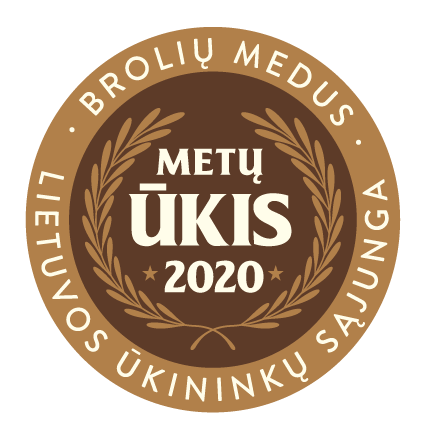The most valuable honey. What’s the best choice?
Not all honey is the same. Different types of honey have different colours, flavours, aromas, compositions and, of course, nutrients. All of this depends on the plants that the bees gather their nectar from. There are around 300 types of honey in the world, valued for different properties. What kind of honey can be tasted in Lithuania and what benefits does it offer? We’ll tell you all about it.
The value of honey and the health benefits it exhibits depend mostly on the properties of the plant from which the nectar was harvested. So, linden honey is best consumed when suffering a cold, while buckwheat honey works best if you need to settle your central nervous system and so on… Typically, the value of honey can be described based on the amounts of antioxidants and minerals it contains. This can easily be ascertained with a quick glance at the honey – the darker it is, the richer it is in its nutrient content.
In Lithuania, the most valued types of honey are buckwheat and linden honey. Buckwheat honey has a rich brown colour, a strong after-taste and is rich in antioxidants and iron. Because the human body can absorb almost all of the nutrients contained in honey, this type of honey is especially recommended for those who suffer from anaemia or wish to bolster their nervous system. Linden honey, on the other hand, has a mild flavour and light colour and is often of a creamy consistency. This is probably the most popular honey in Lithuania, and people are familiar with its beneficial properties: it soothes, alleviates cold symptoms, contributes to overcoming diseases of the respiratory system and encourages sweating, so it should be consumed in moderation.
Among the most valued types of honey is spring honey. Bees produce it from the nectar they harvest from gardens and meadow flowers. It becomes especially valuable if the predominant ingredient is dandelion nectar. It is then that spring honey becomes a powerful weapon in the fight against colds because it has many antibacterial properties. Spring honey is considered the least allergenic, which is why it is recommended for children. Honeydew honey also has a strong antibacterial effect. Honeydew is the plant resin that leaks out when aphids break the integrity of a plant’s exterior layer. Bees collect this honeydew and use it as nectar. Honeydew honey is also very dark in colour because it is rich in antioxidants as well as various minerals. For this reason, it is classified as a high-potency honey, and thus should be consumed only in moderation, especially by children.
There is no consensus about which honey is the most valuable. However, buckwheat, linden, spring and honeydew honey are known for having the widest nutrient range. Harvested during different periods, the honeys have different properties and so should be selected based on individual needs and what would best suit them.
Enjoy and be healthy!





